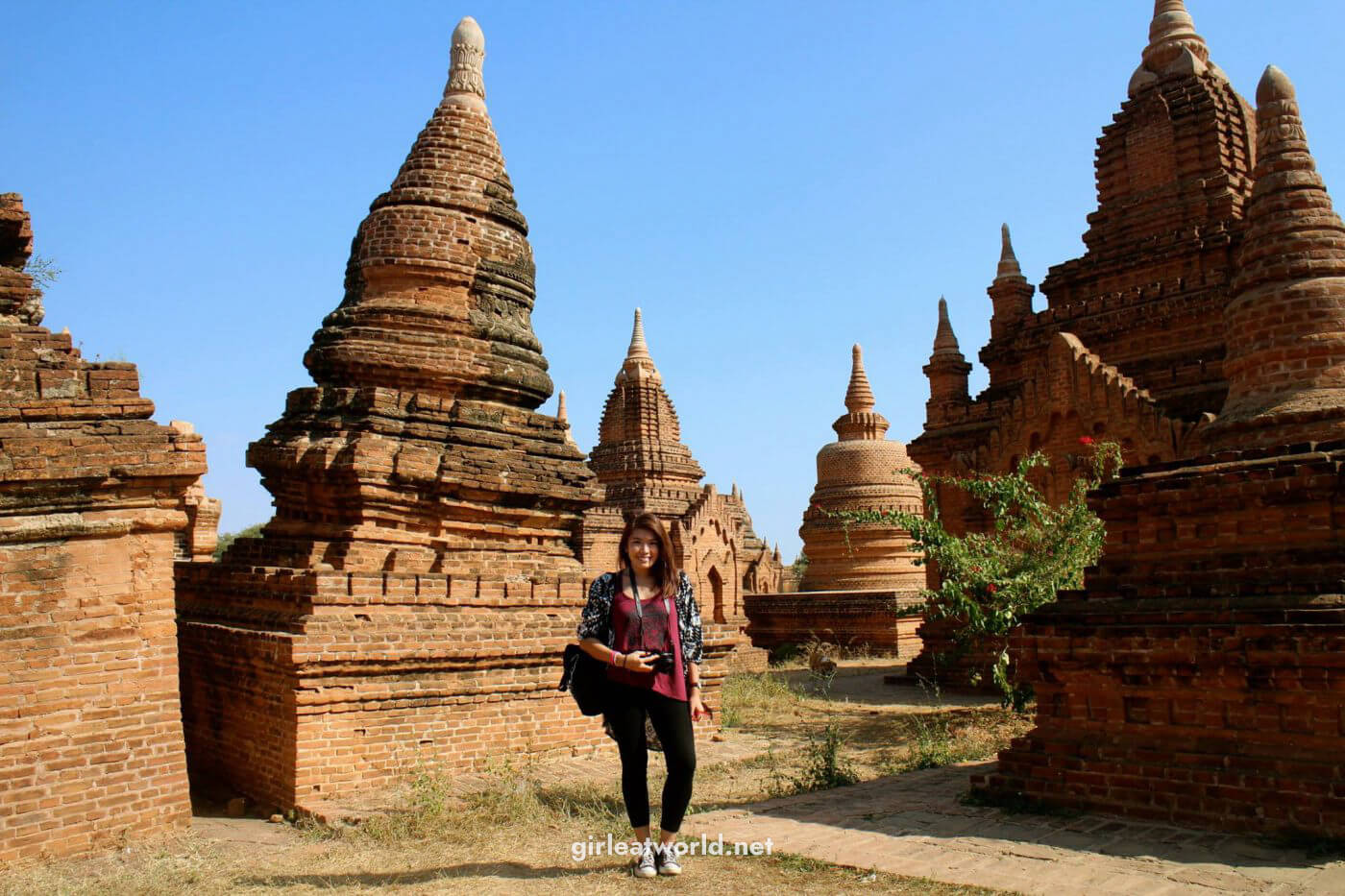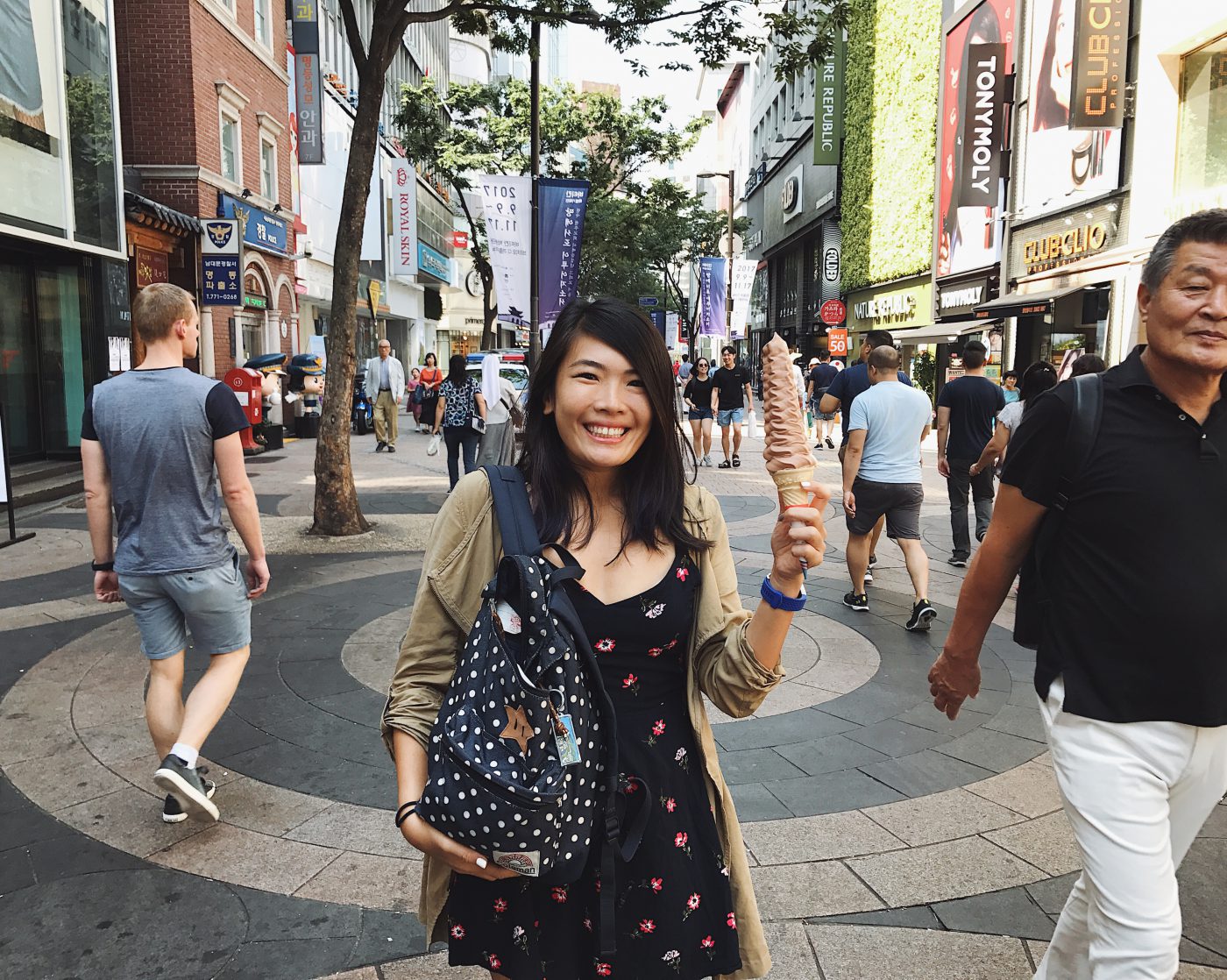Here is one of the most asked questions I get from my followers on Instagram ( aside from this one) – How do you afford to travel so much? Well, here is the long-awaited post – I finally sat down and spilled the tea what I’ve done so far that allowed me to live the life I do now.

First of all, a few disclaimers: I don’t actually travel very much. Relative to my friends, I think my travel pattern is actually quite average especially among those who live in Singapore (and probably those in Europe too). I know many travelers who have been to more countries than me or traveled more frequently than I do. I guess living in a tiny country like Singapore just motivates people to get out of the country more often!
Second, as you’ll see from this post I am not rich(unfortunately) and I don’t make much money from Instagram. Most of the money I save comes from my job, just like most of you.
Lastly, this isn’t meant to be a one-size-fits-all guide. Some advice I will be giving below might not apply to you. For example, I can save money by taking public transport only because my country Singapore makes it possible. If you live in a country where public transport isn’t efficient, then you’ll need to find ways to suit your living situation. I am also aware that I’m very lucky to not have debts or need to support anyone else aside from myself when I started working, which might not be the case for some of you. The point is to live within your own means, whatever that may be.
1. Being Frugal vs Being Cheap
Here is what my actual close friends would know: I am frugal in my daily life. But, this is not to be confused with being cheap. I am okay with spending on an impromptu night out, splitting the bill evenly on a group dinner, taking cabs to save time, buying gifts for friends, etc. However, I am not okay with taking cabs on daily basis with no real purpose, getting a $5-6 cup of coffee every morning, or eating out for every single meal.
Basically, I save up when I can and when it doesn’t become an inconvenience to others. And I think that’s the big difference between being frugal vs cheap.

2. Calculate what you can afford – Have a budget
Wanna know my monthly salary when I first moved to Singapore as a fresh grad? I made S$2,700 a month. That’s less than US$2,000. In a city that has been consistently ranked as the most expensive city in the world, S$2,700 a month is nothing. To top it off, I moved to Singapore at a time where jobs were scarce. It was right after the global financial crisis in 2009 – and the Singapore rental market was at a high point.
But I wasn’t very happy with my life at that time, so I was very determined to move to Singapore. I worked out my budget, forecasted my expenses and crunched out the numbers on a spreadsheet to see if I can really afford to move. And I realized that I can do it – provided that I make a few sacrifices in life. I knew right away that I wouldn’t be able to afford renting a condo, so I got myself a room in public housing for S$850. This move saved me a few hundred dollars a month compared to a room in a condo.
I also aimed to save up S$1,000 a month, which meant I only had about ~S$750 of spending per month. As you can probably imagine, S$750 doesn’t leave me with much as this need to cover basic needs like food, hygiene, and transportation. I should add that income tax is low in Singapore so I just budgeted that into the monthly expenses.
For the first year in Singapore, I had to live very simply until I was able to find a better job that paid me more.

3. Cut out unnecessary spending and stick to your budget
So I’ve talked about budgeting and adjusted my lifestyle to that budget. In order to live off S$750 a month in Singapore, I had to cut out a lot of unnecessary spending and life comforts.
I almost never took a cab. I did not go shopping unless I actually needed something. I don’t eat at a restaurant unless it was for a special occasion – I usually cook at home or eat at a food center, where you can get meals for $5. And obviously, I don’t buy branded bags or clothes because luxury is just not part of my budget.
I used tools to track my spending and make sure I’m not going overboard on anything. When I was living in US, I used mint.com to automatically track and categorize my spending. In Singapore, we don’t have such thing so I had to manually track and categorize my spending using an app. I used a simple one called “Spending” and each time I pay for something I automatically input what I’ve just paid into the app. Not gonna lie, this required a lot of discipline, but I love tracking things so it became a routine that I enjoyed.
So it might sound like I had no fun at all, but that’s actually not true. I made friends with similar vibes and we had fun exploring Singapore – we just chose experiences that aren’t expensive. Mostly, we would hang out or cook at home instead of going out to a bar where alcohol and food are expensive.
Overall, I don’t regret this period of time at all – the experience has taught me some of the most important life skills: how to budget and have self-control of what I choose to spend on. Even though I am now earning more, my monthly spending didn’t grow proportionately with my salary. This has allowed me to save more and spend it on things I care about – which is traveling.

4. Buy second hand whenever possible
There is a stigma that comes with buying second hand, but you know what? I’m not above it. I buy certain things second hand – such as electronics, furniture, home appliances, and even clothes! In Singapore, we have an app called Carousell which allows people to buy and sell directly from each other (similar to GumTree or Craig’s List if you are not from Singapore). If you put the time and look, there are people who are selling things still in perfectly good condition but for much cheaper than retail price. I was able to buy my almost brand new Fitbit and some clothes with tags still on, for 20-40% off the retail price.
When I was living in the US, discount thrift stores are my go-to. Thrifting takes a bit more effort to find things that are worth the dollar, but when you find one they are such a good deal that it’s worth the effort.
I also sell things I no longer need that are still in good condition. Even if I only managed to sell most of them for a fraction of the amount I bought them for, it still added up to quite a bit of cash. These were things that would have otherwise turned into garbage anyway, so it was a win-win situation.

5. Save up before you hit the road
This went on for about a year and I stuck to my plan of saving up $1,000 a month. I was able to save up S$12,000 by the first anniversary of my move to Singapore. That’s 37% of my annual salary. I felt it was enough cushion for my bank account and it was only then I started traveling. But even then, I traveled very frugally – which brings me to my next point.
6. Travel on a budget
This might change in the future, but so far I have not splurged on accommodation on my own dollar. I only stay at a “proper hotel” when I’m traveling for work. Whenever I travel on my own, I look for cheap accommodations such as a shared room in a hostel, a private room in a small hotel, or Airbnb.
The amount I saved on accommodation allowed me to afford other things – mainly, experiences. I value travel experiences far more than anything else. To me, experiences – such as going diving, a bridge jump, going to restaurants, and paying for transportations that will get me to other places – are something that I will definitely remember for years to come. To me, that is worth the sacrifice on comfort.



But I must stress that this is a personal preference – if accommodation is important to you, then by all means budget for it. You just have to cut back on something else.
7. Start out with the more affordable destinations
When I finally saved up enough money on my first year of working, I didn’t just dive in and went on a luxury trip. No, I picked a much more affordable destination – I went to Phuket with my friend. I have come to realize that Phuket isn’t exactly cheap (relative to the rest of South East Asia) but it was still a sensible destination from Singapore. Flight tickets cost less than $200 round trip and accommodations were shared with my friend.
In fact, if you look at my travel map, most of the countries I’ve visited are in South East Asia. They are easier and cheaper to get to from Singapore, so it made sense to visit those countries.
But if you have a dream destination, don’t let affordability stop you! You just need to budget wisely and be patient while saving up.

8. Get a travel insurance
Yeah, don’t worry… This isn’t the part where I insert a link to sell you travel insurance 😛 But all jokes aside, I really do think getting travel insurance is a smart thing to consider.
I have been quite lucky with my travel where I haven’t had to do a claim yet *knock on wood* but I have heard stories from friends who did encounter incidents while traveling and was saved by having travel insurance. If you travel frequently (more than say 2-3 times a year), I recommend getting annual travel insurance that has worldwide coverage, which is what I always do. This works out to be cheaper than buying insurance per trip.
In terms of which travel insurance to choose, look for one that covers lost luggage and medical overseas, since those are the most common travel incidents. For me, I also needed something that covers “extreme sports” since I love going diving and hiking.
9. Make your daily spending count with travel credit card
Another travel tip that has carried me far (quite literally)? Sign up for credit cards that gives you miles for your daily spending! I have been doing this since 2012, and am glad to say that I have been able to enjoy the miles benefit greatly. My miles have taken me to Japan (more than once), Lombok, and around the world to NYC, LA and back to Singapore again – almost for free. I just had to pay airport tax and fuel on these tickets which was a fraction of the regular ticket price. Best of all, I was able to use my miles to redeem for one of the best airlines in the world – Singapore Airlines!
Of course, I can only recommend having a credit card if you have a good grasp of your financial situation. I definitely do NOT recommend putting big purchases on credit card if you cannot pay off the balance on time before it starts to accumulate interest. Also, I recommend holding only 2-3 credit cards at a time to make sure your credit score is in good standing.
You should also go through the T&C of your credit card of choice to learn which spending is not valid for miles – usually payments to educational institution (so your tuition fees) and government doesn’t yield miles.
Concluding Thoughts
Okay, so that’s how I personally afford my travels. And to be honest I don’t think there was anything revolutionary in this post aside of… well, saving up and living within my own means. But that’s exactly the point. There is no magic, shortcuts, sugar daddies, rich parents or special tricks in being able to afford traveling – or anything in else in life, for that matter.
Recently, I participated in a video by MoneySmart.sg – and I swear I was not paid to share this, I just agreed to do it because it aligns with my values. I (and a few other wanderlusting Singaporeans) shared how we afford to our travel. I am putting the video here because I find it fascinating and somewhat of a relief that these world travelers also share the same value and made sacrifices in order to travel! Check it out here or watch directly on facebook:
I hope that helps!

Nice write-up. Very sensible. I too believe in saving, and making a budget and living within it. Now to actually have self-control and discipline.
Thanks for this.
Very sensible planning indeed. I do roughly the same: I use public transport, cook at home, take taxis only when needed, etc. Now I’m on the process of going through my things and selling anything I’m no longer using. That extra cash will do wonders in a low-budget destination 😉
oh good one! I sell stuff I don’t need anymore too, and it’s definitely a great way to make a bit of cash with low effort. I’ll add this advice into my post. Thanks Eva!